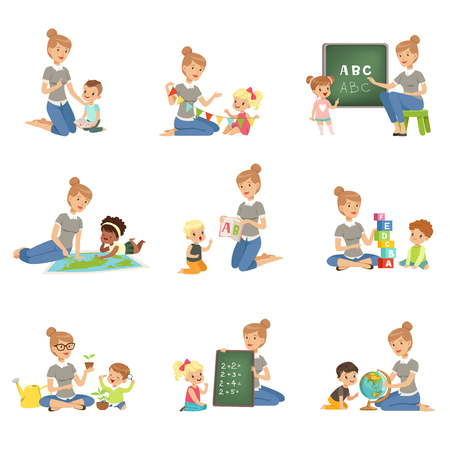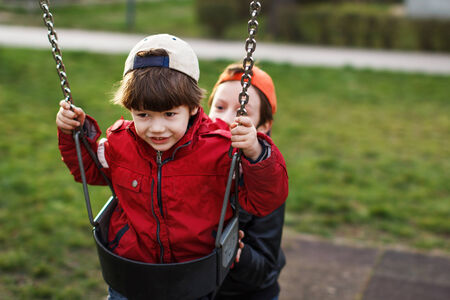Introduction to Child Injury and Recovery in the UK
Childhood injuries are a significant public health concern across the United Kingdom, affecting families, communities, and the wider healthcare system. Each year, thousands of children experience accidents at home, in schools, or during leisure activities, leading to a wide spectrum of physical and psychological consequences. While many young people recover well from minor incidents, more severe injuries can have long-lasting effects on their health, wellbeing, and daily life. Understanding how children navigate the journey from injury to recovery is essential for improving outcomes and ensuring appropriate support.
In the UK context, the landscape of child injury is shaped by factors such as socioeconomic status, access to healthcare services, and regional variations in resources. The prevalence of childhood injuries remains a concern despite ongoing prevention efforts. Moreover, British families often face unique challenges during post-injury recovery pathways. These may include waiting times for specialist care within the NHS, navigating multi-disciplinary support teams, and addressing mental health needs that arise alongside physical rehabilitation. By exploring these distinctive elements, we can begin to appreciate both the progress made and the ongoing gaps in supporting children’s recovery journeys throughout the UK.
2. Initial Emergency Response and NHS Care Pathways
When a child sustains an injury in the UK, the initial emergency response is crucial for ensuring the best possible outcome. The process typically begins with either a call to NHS 111 for advice or directly to 999 in cases of severe trauma. The NHS has established clear care pathways to manage these incidents efficiently, aiming to provide swift and appropriate medical intervention.
Emergency Response Stages
| Stage | Description | Key Professionals Involved |
|---|---|---|
| Initial Contact | Parents or carers contact NHS 111 or 999 depending on the severity of the injury. | Call handlers, Paramedics (if dispatched) |
| On-site Assessment | Paramedics arrive at the scene, assess the childs condition, and provide immediate care as needed. | Paramedics, Emergency Medical Technicians |
| Transport to Hospital | If necessary, the child is transported via ambulance to the nearest A&E (Accident & Emergency) department equipped for paediatric care. | Ambulance crew, A&E staff |
| A&E Triage and Assessment | The child undergoes triage upon arrival at hospital to determine urgency and allocate resources accordingly. | Triage nurses, Paediatricians, Emergency doctors |
| Acute Treatment or Admission | The child receives acute medical treatment, which may include imaging, wound care, surgery, or observation. If needed, admission to a paediatric ward follows. | Consultants, Paediatric nurses, Allied Health Professionals |
NHS Care Pathway Highlights
The NHS paediatric injury pathway emphasises coordinated communication between emergency services and hospital teams. The system is designed to ensure children receive age-appropriate care in facilities that meet national standards for safeguarding and clinical quality. In more complex cases—for example, head injuries or polytrauma—children may be referred to specialist centres such as Major Trauma Centres (MTCs), which offer advanced diagnostics and multidisciplinary support.
Paediatric Major Trauma Centre Network
- Regional Access: Children with severe injuries are rapidly transferred to designated MTCs across England, Scotland, Wales, and Northern Ireland.
- Specialist Teams: These centres have dedicated paediatric trauma teams including surgeons, anaesthetists, and therapists experienced in complex injury management.
- Family Support: The NHS also provides family liaison officers and psychological support services during this critical stage of care.
Summary of Acute Care Principles
The initial emergency response and acute care within the NHS are underpinned by principles of rapid assessment, timely intervention, and holistic consideration of both medical and emotional needs. This structured approach supports optimal recovery trajectories for injured children across the UK.

3. Rehabilitation Services and Community Support
In the UK, rehabilitation services and community support are integral components of post-injury recovery pathways for children. The National Health Service (NHS) works in tandem with local health authorities to ensure that children receive tailored rehabilitation plans, which often include physiotherapy, occupational therapy, and psychological support. These interventions are designed to address both physical and emotional aspects of recovery, ensuring a holistic approach that is sensitive to the needs of young patients.
The Role of Local Health Authorities
Local health authorities play a pivotal role in coordinating care across various settings, such as hospitals, community clinics, and schools. They facilitate multi-disciplinary team meetings involving paediatricians, therapists, social workers, and educational professionals to create integrated care plans. This collaborative approach helps bridge the gap between acute medical care and ongoing rehabilitation, ensuring that children continue to progress once they return home or to school.
Community Resources and Support Networks
Community resources in the UK, including charities, youth clubs, and voluntary organisations, provide valuable supplementary support for children recovering from injuries. These groups often offer peer support sessions, adaptive sports programmes, and accessible transport options for families. Access to these resources can be crucial for maintaining morale and promoting active engagement in rehabilitation activities outside of clinical settings.
Reflecting UK-Specific Practices
What sets the UK apart is its emphasis on inclusivity and accessibility within its healthcare framework. Initiatives such as the Children’s Trust and local authority-funded short break services exemplify this commitment by providing specialised rehabilitation environments tailored for paediatric needs. Through a blend of statutory services and grassroots community involvement, the UK aims to foster an environment where every child has the opportunity to achieve their fullest potential following injury.
4. Educational and Social Reintegration
Supporting children’s return to education and social activities after injury in the UK is a multifaceted process that relies on close collaboration between schools, families, and healthcare teams. Effective reintegration involves not only addressing academic needs but also considering emotional wellbeing and peer relationships. Early communication and shared planning are essential to ensure that each child receives tailored support as they transition back into their learning environment.
Collaborative Roles in Reintegration
| Stakeholder | Key Responsibilities |
|---|---|
| Schools | Provide flexible timetables, arrange catch-up sessions, monitor progress, foster inclusive peer environments, and liaise with healthcare professionals. |
| Families | Communicate ongoing needs, advocate for their child, encourage participation in school life, and support at-home learning or therapy exercises. |
| Healthcare Teams | Offer guidance on physical or cognitive limitations, provide documentation for adjustments, and advise on phased returns to activities. |
Strategies for Successful Reintegration
- Individualised Education Plans (IEPs): Developing IEPs allows schools to set realistic goals and accommodations based on each child’s recovery status.
- Pupil Support Meetings: Regular meetings involving teachers, parents, healthcare staff, and sometimes the child themselves help review progress and adapt strategies accordingly.
- Peer Awareness Programmes: Educating classmates about a returning pupil’s needs can foster empathy and reduce stigma associated with visible injuries or temporary absences.
- Gradual Return Schedules: Staggered reintroduction to full-time attendance can help manage fatigue or anxiety, making the process less overwhelming for the child.
The Importance of Ongoing Communication
Sustained dialogue between all parties is crucial. Schools often appoint a designated staff member—such as a SENCO (Special Educational Needs Coordinator)—to oversee the child’s reintegration journey and serve as a point of contact. This approach ensures concerns are addressed promptly and adaptations are made as required throughout recovery.
Cultural Considerations in the UK Context
The UK’s inclusive educational framework emphasises equal opportunities for all pupils regardless of health status. Local authorities may also provide additional resources through services such as Hospital Education Services or Home Tuition for children unable to immediately return to mainstream schooling. These culturally embedded systems highlight the collective responsibility placed on communities to nurture children post-injury—not only academically but socially as well.
5. Supporting Families and Carers
Charities Making a Difference
In the UK, a number of charities play a pivotal role in supporting families and carers of children recovering from injuries. Organisations such as The Children’s Trust, Child Brain Injury Trust, and Kidz Aware offer tailored services ranging from emotional support to practical advice. These charities often provide helplines, peer-support networks, and family workshops that help carers feel less isolated during the recovery journey. Their advocacy also helps raise awareness about the unique needs faced by children and their families post-injury.
Carer Support Systems within the NHS and Community
The NHS recognises the vital role of carers in a child’s recovery process. Local NHS Trusts frequently offer carer assessments, allowing families to access respite care, counselling, and financial guidance. Many hospitals have dedicated Family Liaison Officers or Paediatric Care Coordinators who act as points of contact for ongoing queries and logistical concerns. Furthermore, local councils can provide short breaks and social care support, ensuring that the wellbeing of carers is maintained alongside that of the recovering child.
Informational Resources for Empowerment
Access to clear, reliable information is essential for families navigating post-injury recovery. The NHS website provides comprehensive guides covering everything from managing medication to understanding rehabilitation pathways. Online platforms such as Contact (for families with disabled children) and SCOPE offer practical toolkits, webinars, and downloadable resources tailored to specific injuries or conditions. Many UK charities also collaborate with medical professionals to host Q&A sessions or publish easy-to-understand booklets to demystify complex medical jargon.
Culturally Sensitive and Inclusive Support
An important consideration in the UK is ensuring that support is accessible to families from diverse backgrounds. Charities and local services increasingly offer materials in multiple languages, as well as culturally sensitive advice sessions. This inclusive approach aims to ensure all families—regardless of background—receive equitable support throughout their child’s recovery journey.
By combining the efforts of national charities, robust NHS support systems, and accessible informational resources, families in the UK are better equipped to navigate the challenges of post-injury recovery. As services continue to evolve, there remains a strong emphasis on partnership and empowerment for both carers and children alike.
6. Challenges, Disparities, and Ongoing Research
While the UK has made significant strides in paediatric post-injury care, various challenges remain that can impact recovery outcomes for children and their families. One of the most prominent obstacles is the presence of regional disparities in access to rehabilitation services. Children living in rural or under-resourced areas may face longer travel times to specialist centres, limited local expertise, or delayed referrals, which can hinder timely intervention and continuity of care.
Socioeconomic Barriers
Socioeconomic factors further complicate the recovery pathway. Families from disadvantaged backgrounds may struggle with transportation costs, time off work for appointments, or navigating complex health and social care systems. These pressures can lead to inconsistent attendance at follow-up sessions and reduced engagement with rehabilitation programmes.
Cultural and Linguistic Diversity
The UKs cultural diversity introduces additional layers of complexity. Language barriers and differing cultural perceptions around injury, disability, and healthcare can affect communication between families and professionals, occasionally resulting in misunderstandings about treatment plans or expectations.
National Policy Initiatives and Research Efforts
Recognising these challenges, several UK-wide research initiatives are underway. For instance, the NIHR (National Institute for Health and Care Research) funds studies examining effective models for community-based rehabilitation and strategies to reduce inequalities in access. The NHS Long Term Plan also highlights the need for integrated care pathways that bridge gaps between hospital discharge and community support, particularly for vulnerable groups.
Policy makers are focusing on standardising paediatric trauma networks across England, Scotland, Wales, and Northern Ireland to ensure consistent quality of care regardless of postcode. Ongoing collaboration between clinicians, researchers, charities such as The Children’s Trust and Headway, and government bodies aims to build a more equitable system where every child has the best possible chance at a full recovery.


